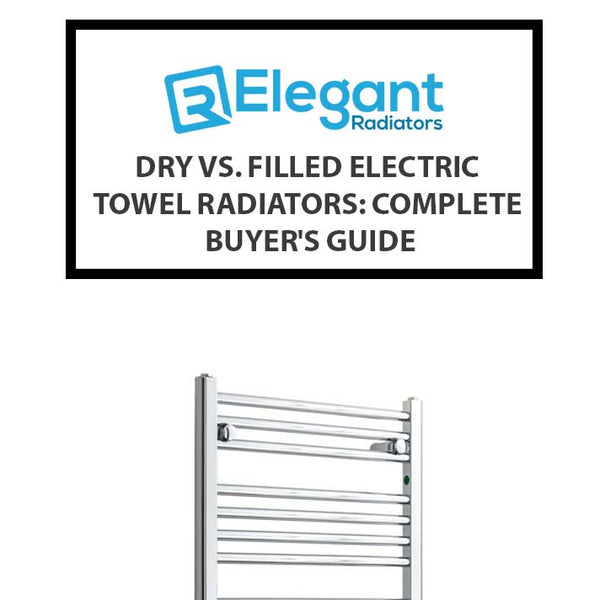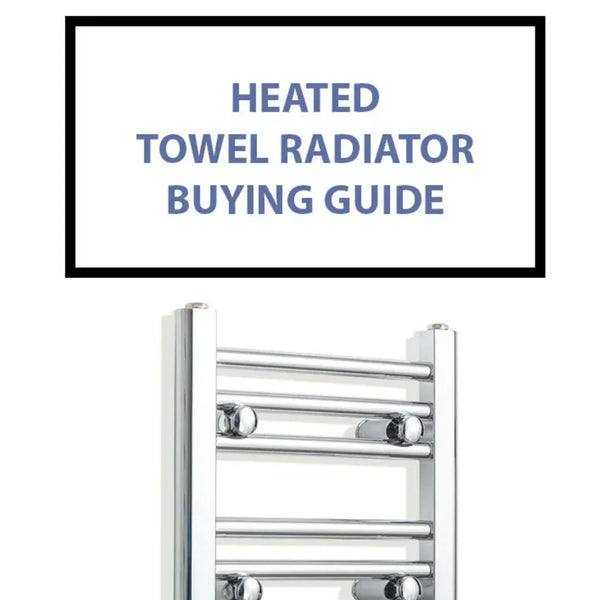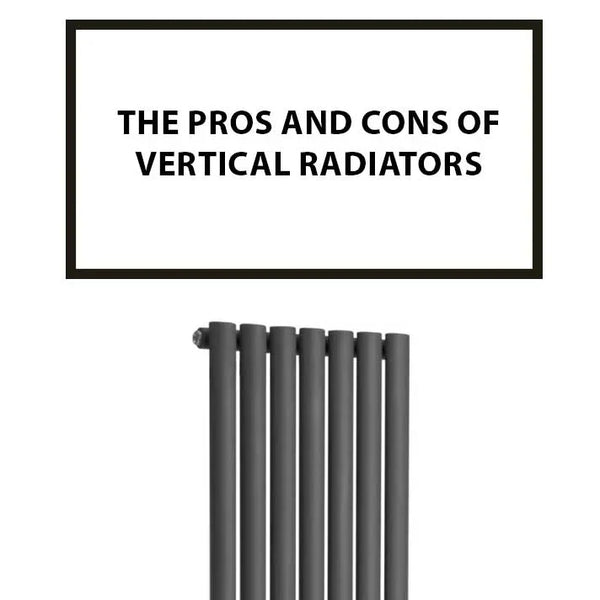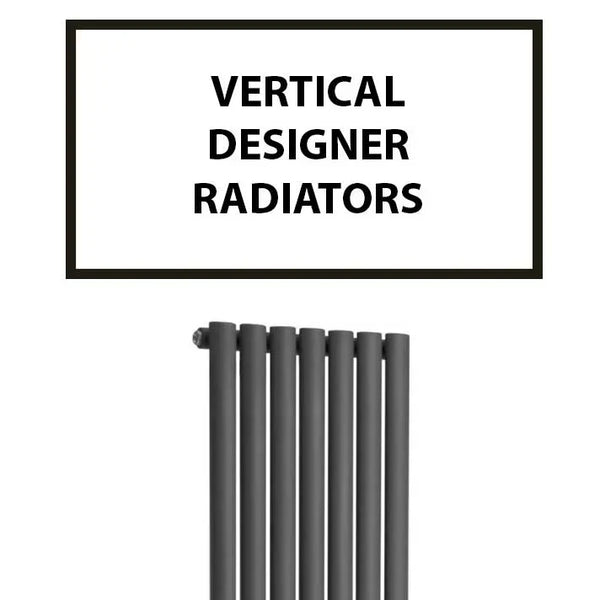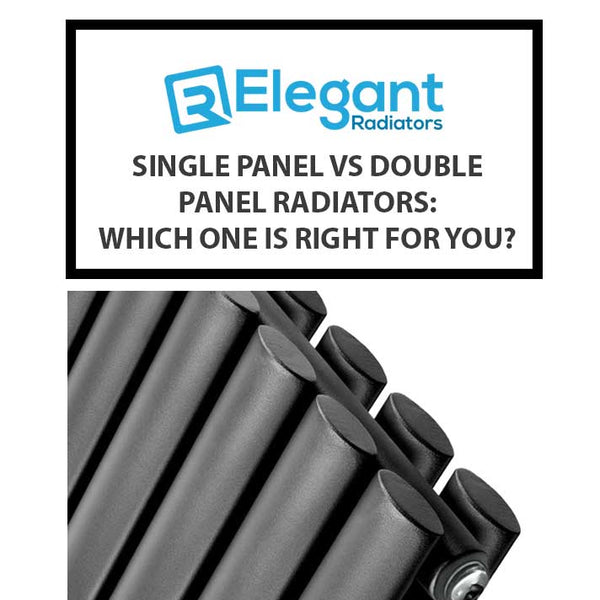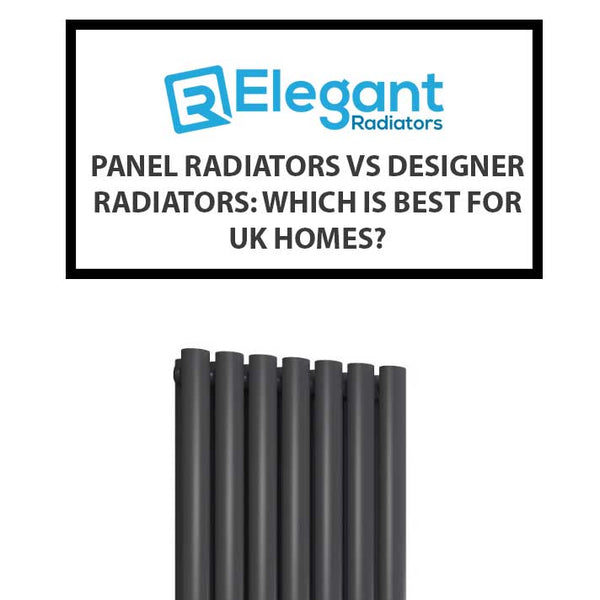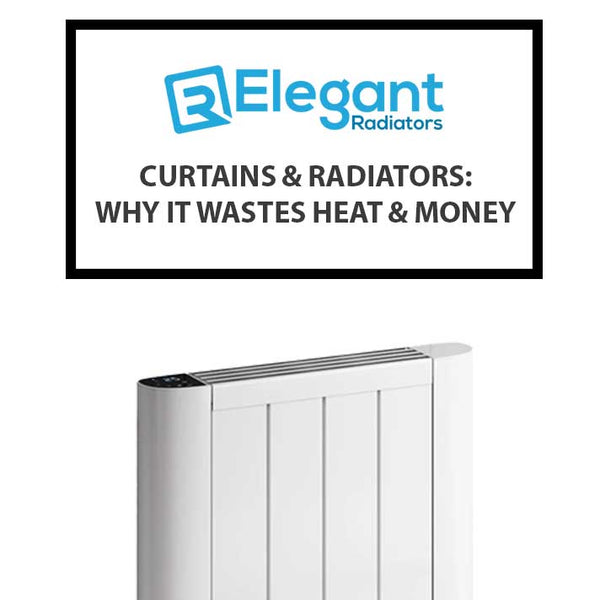All information on Vertical Designer Radiators

Vertical designer radiators have revolutionised home heating across the UK, transforming from exclusive luxury items into essential features for modern living spaces. These innovative heating solutions combine exceptional functionality with stunning aesthetics, making them the perfect choice for homeowners who refuse to compromise on style or performance. Whether you're renovating a period property or designing a contemporary space, understanding vertical radiators is crucial for making an informed investment that enhances your home's comfort, appearance, and market value.
Why Vertical Radiators Are the Smart Choice for Modern UK Homes
Space constraints define modern British living. With property prices soaring and room sizes shrinking, every square inch of your home matters. Traditional horizontal radiators occupy prime wall real estate beneath windows, restricting furniture placement and limiting interior design options. Vertical radiators solve these challenges elegantly whilst delivering powerful heating performance.
- Maximise Living Space: Vertical radiators free up valuable lower wall areas for furniture, artwork, and storage solutions. Place your sofa directly under the window, position bookshelves where radiators once stood, or create that perfect reading nook you've always wanted.
- Perfect for Awkward Spaces: Narrow wall sections between windows, alongside doorways, in tight hallways, or cramped bathrooms become ideal locations for vertical radiators. These previously unusable spaces transform into efficient heating zones.
- Architectural Features: Modern vertical radiators aren't hidden away they're celebrated as design elements. Choose from sleek flat panels, elegant column designs, or sculptural statement pieces that become conversation starters.
- Enhanced Room Layout Flexibility: Without horizontal radiators dictating furniture placement, you gain complete freedom to arrange rooms according to your lifestyle needs rather than heating system constraints.
- Superior Heat Distribution: The tall profile naturally encourages warm air to rise and circulate throughout the room. This proves particularly beneficial in rooms with high ceilings where traditional radiators struggle to distribute heat effectively to upper areas.
Understanding Radiator Materials and Their Benefits
The material your vertical radiator is constructed from significantly impacts its performance, longevity, and running costs. Each material offers distinct advantages suited to different requirements and budgets.
- Steel Radiators - The Versatile Choice: Steel dominates the UK market due to its exceptional versatility and value. Manufacturers can mould steel into virtually any design from traditional Victorian columns to ultra-modern geometric patterns. Steel radiators heat moderately quickly, retain warmth well, and offer the widest colour selection. They're durable and cost-effective, making them ideal for budget-conscious buyers seeking style variety. Use central heating inhibitor annually to prevent internal corrosion and ensure decades of reliable service.
- Aluminium Radiators - The Efficiency Champion: Aluminium stands as the most energy-efficient radiator material available. As thermal superconductors, aluminium radiators heat up remarkably quickly and cool down rapidly when your thermostat signals satisfaction. This responsiveness means your boiler operates for shorter periods, directly reducing fuel consumption and lowering bills. Aluminium's lightweight nature makes it perfect for plasterboard walls that cannot support heavier steel or cast iron models. The trade-off? Higher initial purchase costs and a softer metal surface more susceptible to accidental dents.
- Cast Iron Radiators - The Traditional Luxury: Cast iron represents heating heritage and timeless elegance. These radiators excel at heat retention, staying warm long after your central heating switches off, providing gentle, consistent warmth throughout the day. Their substantial weight and classic aesthetic suit period properties perfectly, complementing Victorian, Edwardian, and Georgian architecture. Cast iron radiators are investment pieces slow to heat initially but incredibly durable and capable of lasting a century with proper maintenance. Expect premium pricing and mandatory professional installation due to their considerable weight.
- Stainless Steel - The Premium Contemporary Option: Stainless steel radiators offer corrosion resistance, modern aesthetics, and excellent durability. Popular in bathrooms and kitchens where moisture resistance matters, stainless steel maintains its appearance indefinitely. These radiators suit contemporary design schemes perfectly with their polished or brushed finishes.

Radiator Material Comparison Table
| Feature | Mild Steel | Aluminium | Cast Iron |
|---|---|---|---|
| Heat-Up Time | Moderate | Very Fast | Very Slow |
| Heat Retention | Moderate | Low (Cools quickly) | Excellent |
| Weight | Heavy | Very Light | Extremely Heavy |
| Initial Cost | £ | £££ | ££££ |
| Running Cost | Moderate | Lowest | Highest |
| Durability | Very Good (Prone to rust) | Good (Prone to dents) | Excellent |
| Best For... | Budget-conscious buyers wanting maximum style choice | Energy efficiency, fast heat-up, and plasterboard walls | Period properties and consistent, long-lasting heat |
Calculating Your Heating Requirements Accurately
Purchasing a beautiful radiator that cannot adequately heat your room is an expensive mistake. Accurate BTU calculation is non-negotiable for comfort and efficiency.
- What BTU Means: British Thermal Units measure heat output. Higher BTU ratings indicate greater heating capacity. Your room's size, insulation quality, window count, and external wall exposure determine required BTU output.
- Essential Calculation Factors: Room dimensions (length, width, ceiling height), window quantity and glazing type (single, double, triple), number of external walls exposed to outside temperatures, insulation quality in walls and loft spaces, room location (above heated spaces or unheated garages), and intended room temperature all influence BTU requirements.
- Professional BTU Calculators: Online BTU calculators provide accurate assessments within minutes. Input your room specifications and receive precise heat output requirements. This scientific approach prevents undersized radiators that leave rooms cold or oversized models that waste energy and money.
- The Size Myth: Physical radiator dimensions don't determine heating capabilityBTU output does. A compact, high-output radiator can outperform a larger, lower-rated model. Always prioritise BTU ratings over physical size when selecting radiators.
UK Vertical Radiator Costs in 2025
Understanding the full financial picture helps you budget effectively for your vertical radiator installation. Costs vary significantly based on radiator size, style, and installation complexity.
Average Vertical Radiator Unit Costs
| Radiator Size | Average Cost Range |
|---|---|
| Small Vertical Radiator | £100 – £200 |
| Medium Vertical Radiator | £150 – £250 |
| Large Vertical Radiator | £230 – £575+ |
| Designer / Statement Radiator | £150 – £600+ |
Installation Considerations and Professional Requirements
Proper installation ensures safety, efficiency, and longevity. Professional installation isn't optional it's essential for optimal performance and regulatory compliance.
- Wall Strength Assessment: Vertical radiators, especially steel and cast iron models, can weigh 50-70kg before water fills the system. Solid masonry walls support any radiator with appropriate heavy-duty fixings. Plasterboard walls require special attention brackets must fix directly to wooden studs or use specialised toggle bolts designed for heavy loads. For particularly heavy radiators on plasterboard, choosing lightweight aluminium alternatives is safer and prevents potential wall damage.
- Pipework Modifications: Most UK homes feature pipework positioned for horizontal radiators under windows. Relocating pipes for vertical radiators involves floor lifting, wall chasing, and professional plumbing work. This complexity explains why vertical radiator installation typically costs more than simple horizontal replacements. Budget accordingly and obtain detailed quotes covering all pipework adjustments.
- The Critical Baffle Component: Vertical column radiators require a baffle (flow diverter) fitted inside the inlet connection. This small plastic or metal piece forces hot water to travel upward through all columns before exiting. Without proper baffle installation, water follows the easiest path across the bottom, leaving upper sections frustratingly cold. Ensure your installer confirms correct baffle fitting—this single component determines whether your radiator heats evenly or fails to perform.
- Building Regulations Compliance: UK Building Regulations mandate specific standards for heating installations. Gas Safe registered engineers (for gas systems) ensure compliance with Approved Document J covering combustion appliance safety and Part L addressing energy efficiency requirements. Recent regulations mandate maximum 55°C flow temperatures for improved efficiency, making modern radiators designed for lower temperatures increasingly important.
- Thermostatic Radiator Valves: Installing TRVs on each radiator enables individual room temperature control, preventing energy waste in unused spaces. These inexpensive valves deliver significant efficiency improvements and comfort enhancement, paying for themselves through reduced heating bills within months.
Design Styles and Aesthetic Options
Vertical radiators excel at complementing and enhancing your interior design rather than compromising it.
- Contemporary Flat Panel Designs: Sleek, minimalist flat panels suit modern interiors perfectly. Their clean lines and unobtrusive profiles blend seamlessly with contemporary décor whilst delivering excellent heat output. Available in numerous colours including sophisticated anthracite, dramatic matte black, and custom RAL shades.
- Classic Column Radiators: Multi-column vertical radiators emulate Victorian and Edwardian heating aesthetics using modern materials and efficiency. Perfect for period properties or adding traditional elegance to contemporary spaces, these timeless designs complement any classic interior scheme.
- Designer Statement Pieces: Sculptural radiators transform heating into art. Geometric patterns, curved profiles, and innovative designs create stunning focal points that define room character. These premium options suit homeowners who view radiators as design opportunities rather than necessary evils.
- Mirror Radiators: Combining full-length mirrors with efficient heating, mirror radiators deliver dual functionality perfect for bedrooms, bathrooms, and hallways. They save wall space whilst adding light and dimension to rooms, making spaces feel larger and brighter.
- Vertical Towel Radiators: Bathroom and kitchen specialists, vertical towel radiators provide room heating alongside convenient towel warming and drying. Dual fuel options operate electrically in summer without activating full central heating, offering year-round functionality and convenience.
Top Vertical Radiators for UK Homes in 2025
Choosing the right vertical radiator depends on your specific needs, space constraints, and design preferences. Here's a comprehensive comparison of leading models available in the UK market.
Energy Efficiency and Running Costs
Understanding efficiency and operational costs helps make informed decisions that save money long-term.
- Material Impact on Efficiency: Aluminium radiators heat fastest and cool quickest, reducing boiler running time and fuel consumption. Steel offers moderate efficiency with balanced heat-up and retention. Cast iron provides excellent retention but slower response times, meaning longer initial heating periods but sustained warmth after heating switches off.
- Real-World Efficiency Advantages: Vertical radiators rarely suffer furniture or curtain obstruction that plagues horizontal models. Unobstructed radiators circulate heat freely throughout rooms, ensuring energy used translates directly into comfortable warmth rather than wasted trapped heat behind sofas or drapes.
- Smart Controls Integration: Modern vertical radiators work perfectly with smart thermostats and TRVs, enabling precise temperature control and scheduling. Heat only rooms you're using when you're using them, eliminating waste and reducing bills substantially.
- Low Temperature System Compatibility: Modern vertical radiators perform excellently with energy-efficient low temperature heating systems including heat pumps. Their efficient designs extract maximum warmth from lower water temperatures, making them future-proof investments as UK heating transitions toward renewable technologies.
Vertical vs Horizontal Radiators: Direct Comparison
| Feature | Vertical Radiators | Horizontal Radiators |
|---|---|---|
| Space Usage | Excellent. Frees up valuable lower wall space for furniture | Poor. Occupies significant horizontal wall space, often under a window |
| Aesthetic Impact | High. Often used as a modern, bold design statement or focal point | Low to Moderate. Typically designed to be understated and blend in |
| Installation | More complex and costly, often requiring pipework to be moved | Straightforward and cheaper, especially for a like-for-like swap |
| Room Suitability | Ideal for kitchens, bathrooms, hallways, and any room with limited wall space | Suitable for all rooms, especially large rooms with ample wall space |
| Efficiency | Excellent practical efficiency as they are rarely obstructed by furniture | Good theoretical efficiency, but often reduced in practice by obstructions |
Maintenance and Longevity
Simple maintenance ensures optimal performance throughout your radiator's decades-long lifespan.
- Regular Cleaning: Dust accumulation between columns and panels inhibits heat output. Clean radiators monthly using soft brushes, vacuum attachments, or microfibre cloths. This simple task maintains efficiency and prevents gradual performance degradation.
- Annual Bleeding: Trapped air creates cold spots at radiator tops. Bleed radiators annually using a radiator key, releasing air until water drips from the bleed valve. This five-minute task per radiator maintains even heating throughout the system.
- System Inhibitor Checks: Central heating inhibitor prevents internal corrosion, sludge formation, and limescale buildup that damage radiators and reduce efficiency. Request inhibitor level checks during annual boiler servicing and top up as needed to protect your investment.
- Professional Servicing: Annual boiler servicing by Gas Safe engineers maintains system health, identifies potential issues early, and ensures optimal efficiency. This preventative maintenance costs far less than emergency repairs or premature radiator replacement.
The Pros and Cons of Vertical Radiators
Frequently Asked Questions
Are vertical radiators as efficient as horizontal ones?
Yes, vertical radiators are just as efficient as horizontal models in real-world applications. Whilst horizontal radiators have a slight theoretical convection advantage, vertical radiators rarely get blocked by furniture or curtains, allowing unrestricted heat circulation throughout the room. When properly sized using BTU calculations, vertical radiators deliver identical heating performance whilst saving valuable wall space.
How do I calculate the right BTU for my vertical radiator?
Use an online BTU calculator that factors in your room dimensions (length, width, ceiling height), number and type of windows (single, double, triple glazed), external walls, insulation quality, and room location. The calculator provides precise heat output requirements within minutes. Choosing the correct BTU rating is more important than radiator size—undersized radiators leave rooms cold whilst oversized models waste energy and money.
What is the average cost to install a vertical radiator in the UK?
Vertical radiator installation in the UK typically costs between £300-£600 total, including the unit and labour. Small radiators range from £100-£200, medium from £150-£250, and large from £230-£575+. Labour costs £150-£300 for straightforward replacements, or £200-£600 for new installations requiring pipework modifications. London prices tend to be 20% higher. Always obtain detailed quotes covering all pipework adjustments.
Can I install a vertical radiator myself or should I hire a professional?
Professional installation by Gas Safe registered engineers is strongly recommended. One in six UK plumbers report fixing botched DIY radiator installations that caused leaks, system failures, or inadequate heating. Professionals ensure proper wall mounting for heavy radiators (50-70kg), correct pipework connections, baffle installation for even heating, and compliance with UK Building Regulations. The modest professional installation cost prevents expensive repairs from DIY mistakes.
What is a baffle and why is it crucial for vertical radiators?
A baffle (flow diverter) is a small but essential plastic or metal component fitted inside vertical column radiators at the inlet connection. It forces hot water to travel upward through all columns before exiting, ensuring even heating from bottom to top. Without correct baffle installation, hot water takes the easiest path across the bottom and exits immediately, leaving upper sections cold. This single component determines whether your vertical radiator heats properly or fails to perform.
Which material is best for vertical radiators: steel, aluminium, or cast iron?
Steel offers the best value and widest style variety at moderate cost, ideal for most UK homes. Aluminium provides superior energy efficiency, heating and cooling extremely quickly to reduce boiler running time and bills—perfect for plasterboard walls due to lightweight construction. Cast iron delivers exceptional heat retention and timeless aesthetics for period properties but costs more and requires professional installation due to extreme weight. Choose based on your priorities: budget (steel), efficiency (aluminium), or tradition (cast iron).
Can heavy vertical radiators be safely installed on plasterboard walls?
Yes, but requires proper precautions and specialist fixings. Brackets must secure directly to internal wooden studs behind plasterboard or use heavy-duty plasterboard fixings like toggle bolts that spread weight across larger areas. Steel and cast iron radiators weigh 50-70kg before water fills the system, potentially exceeding plasterboard limits. For very heavy models, lightweight aluminium radiators are safer alternatives that prevent wall damage or radiator detachment. Always consult professional installers for wall strength assessment.
Do vertical radiators work well in small bathrooms and kitchens?
Vertical radiators are perfect for small bathrooms and kitchens where horizontal wall space is premium. Their tall, slim profiles fit narrow sections between windows, alongside doorways, or in tight corners whilst delivering powerful heating. Ultra-slim models as narrow as 236mm suit even the most compact spaces. Vertical towel radiators are especially popular in bathrooms, combining room heating with towel warming without consuming valuable wall space needed for vanities, storage, or fixtures.
What are dual fuel vertical radiators and when should I use them?
Dual fuel radiators connect to both your central heating system and mains electricity via a T-piece valve and electric heating element. This provides exceptional flexibility—run cost-effectively with central heating in winter, or switch to electric mode in summer for warming towels or heating single rooms without firing up your entire boiler. Dual fuel models are particularly popular in bathrooms and kitchens where year-round functionality matters. They cost more initially but offer convenience and efficiency that justify the investment for many UK homeowners.
How can vertical radiators increase my property value?
Upgrading to designer vertical radiators can potentially add up to £10,000 to your UK property value according to property experts. Modern vertical radiators signal high-quality, design-conscious renovation to potential buyers, creating powerful first impressions. They imply that other less visible aspects like plumbing, electrics, and insulation have received the same careful attention and investment, justifying premium valuations far beyond the radiators' actual cost. This makes vertical radiators a strategic investment rather than just an expense.

